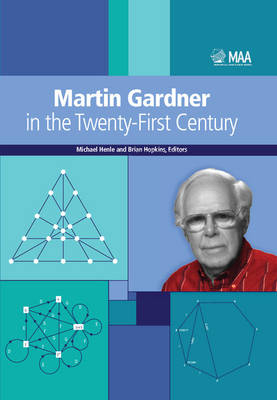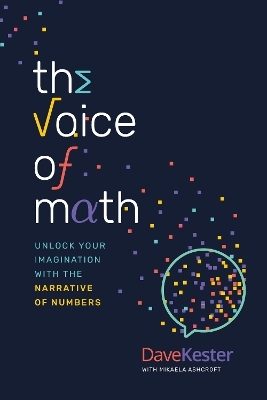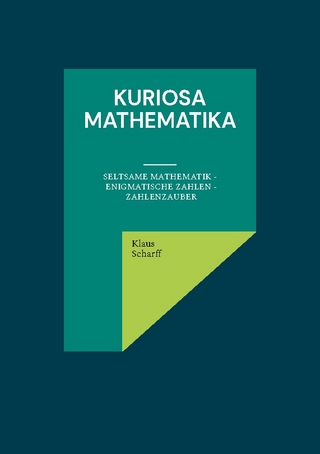
Martin Gardner in the Twenty-First Century
Mathematical Association of America (Verlag)
978-0-88385-913-1 (ISBN)
- Keine Verlagsinformationen verfügbar
- Artikel merken
The prodigious writings of Martin Gardner, from his Mathematical Games column in Scientific American to the 70-plus books he authored, had an enormous influence on the field of recreational mathematics. This book collects articles Gardner wrote for the MAA in the twenty-first century, together with other articles the MAA published from 1999 to 2012 that are inspired by his work. Eight of Gardner's articles are presented here: together they represent his playful and engaging approach to recreational mathematics, and the breadth of his interests, spanning geometry, number theory, graph theory, probability, and pseudo-science. The remaining 33 chapters are a diverse collection of responses to Gardner's work, many of which address open problems. This book is a tribute to the deep and lasting impact of a prolific and brilliant writer. It is for anyone who, like Martin Gardner, loves mathematics.
Michael Henle is a professor of mathematics at Oberlin College. He is the author of several books including "Which Numbers are Real?" published by the MAA in 2012. Trained as a functional analysis, he also writes on combinatorial subjects and geometry. He is serving as editor of The College Mathematics Journal through to 2013. Brian Hopkins is a professor of mathematics at Saint Peter's University in Jersey City, New Jersey. He won, with Robin Wilson, the 2005 George Polya Award, edited the 2008 MAA Notes volume Resources for Teaching Discrete Mathematics, and was given the 2011 MAA New Jersey Section Award for Distinguished College or University Teaching of Mathematics. Much of his research stems from Bulgarian Solitaire, a topic popularized by Martin Gardner. Hopkins will be the editor of the College Mathematics Journal from 2014 to 2018.
Preface; Part I. Geometry: 1. The asymmetric propeller Martin Gardner; 2. The asymmetric propeller revisited Gillian Saenz, Christopher Jackson, and Ryan Crumley; 3. Bracing regular polygons as we race into the future Greg W. Frederickson; 4. A Platonic Sextet for Strings Karl Schaffer; 5. Prince Rupert's rectangles Richard P. Jerrard and John E. Wetzel; Part II. Number Theory and Graph Theory: 6. Transcendentals and early birds Martin Gardner; 7. Squaring, cubing, and cube rooting Arthur T. Benjamin; 8. Carryless arithmetic mod 10 David Applegate, Marc LeBrun and N. J. A. Sloane; 9. Mad tea party cyclic partitions Robert Bekes, Jean Pedersen and Bin Sha; 10. The continuing saga of snarks Sarah-Marie Belcastro; 11. The map-coloring game Tomasz Bartnicki, Jaroslaw Grytczuk, H. A. Kierstead and Xuding Zhu; Part III. Flexagons and Catalan Numbers: 12. It's okay to be square If you're a flexagon Ethan J. Berkove and Jeffrey P. Dumont; 13. The V-flex, triangle orientation, and Catalan numbers in hexaflexagons Ionut E. Iacob, T. Bruce McLean and Hua Wang; 14. From hexaflexagons to edge flexagons to point flexagons Les Pook; 15. Flexagons lead to a Catalan number identity David Callan; 16. Convergence of a Catalan series Thomas Koshy and Z. Gao; Part IV. Making Things Fit: 17. L-tromino tiling of mutilated chessboards Martin Gardner; 18. Polyomino dissections Tiina Hohn and Andy Liu; 19. Squaring the plane Frederick V. Henle and James M. Henle; 20. Magic knight's tours John Beasley; 21. Some new results on magic hexagrams Martin Gardner; 22. Finding all solutions to the magic hexagram Alexander Karabegov and Jason Holland; 23. Triangular numbers, Gaussian integers, and KenKen John J. Watkins; Part V. Further Puzzles and Games; 24. Cups and downs Ian Stewart; 25. 30 years of Bulgarian solitaire Brian Hopkins; 26. Congo bongo Hsin-Po Wang; 27. Sam Loyd's courier problem with Diophantus, Pythagoras, and Martin Gardner Owen O'Shea; 28. Retrolife and the pawns neighbors Yossi Elran; 29. RATWYT Aviezri Fraenkel; Part VI. Cards and Probability; 30. Modeling mathematics with playing cards Martin Gardner; 31. The probability an amazing card trick is dull Christopher N. Swanson; 32. The Monty Hall problem, reconsidered Stephen Lucas, Jason Rosenhouse and Andrew Schepler; 33. The secretary problem from the applicant's point of view Darren Glass; 34. Lake Wobegon dice Jorge Moraleda and David G. Stork; 35. Martin Gardner's mistake Tanya Khovanova; Part VII. Other Aspects of Martin Gardner: 36. Against the odds Martin Gardner; 37. A modular miracle John Stillwell; 38. The golden ratio—a contrary viewpoint Clement Falbo; 39. Review of The Mysterious Mr. Ammann by Marjorie Senechal Philip Straffin; 40. Review of PopCo by Scarlett Thomas Martin Gardner; 41. Superstrings and Thelma Martin Gardner; Index; About the editors.
| Erscheint lt. Verlag | 26.10.2011 |
|---|---|
| Zusatzinfo | 13 Tables, black and white; 121 Halftones, black and white; 90 Line drawings, black and white |
| Verlagsort | Washington |
| Sprache | englisch |
| Maße | 178 x 253 mm |
| Gewicht | 550 g |
| Themenwelt | Mathematik / Informatik ► Mathematik ► Arithmetik / Zahlentheorie |
| Mathematik / Informatik ► Mathematik ► Geometrie / Topologie | |
| Mathematik / Informatik ► Mathematik ► Geschichte der Mathematik | |
| ISBN-10 | 0-88385-913-0 / 0883859130 |
| ISBN-13 | 978-0-88385-913-1 / 9780883859131 |
| Zustand | Neuware |
| Informationen gemäß Produktsicherheitsverordnung (GPSR) | |
| Haben Sie eine Frage zum Produkt? |
aus dem Bereich


